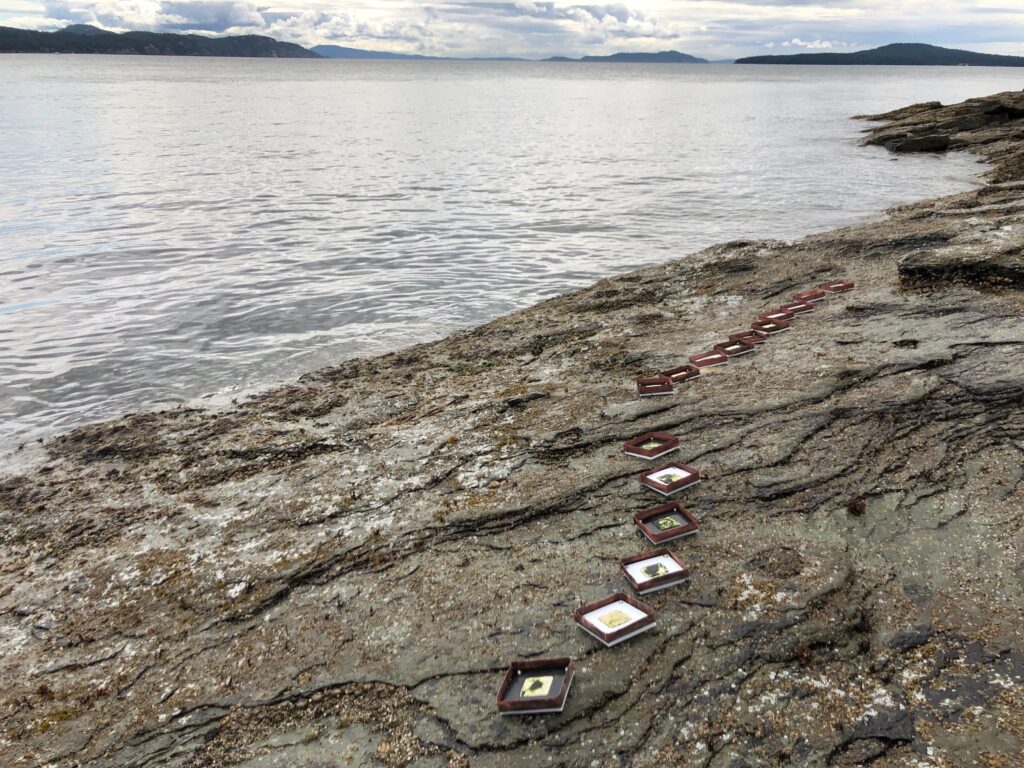Ferry wake, logs, and the challenges of intertidal field work
When I initially wrote up my grant proposal for this project, I included the following statement:
“Intertidal experiments are often subject to adverse chance events, and our proposed experiment is no exception. Wave action from storms, impacts from drifting logs, and interference by animals like seals or predators are all plausible factors that could compromise this experiment.”
In this case, I suppose I get to say I told myself so. However, in a few respects I was wrong – “chance events” implies randomness, but there’s nothing random about BC Ferries’ Swartz Bay-Tsawassen sailings, which happen on a fixed schedule (wind-permitting) with surprising regularity. In addition, “wave action from storms” is less accurate than “wake action from ferries”, as we discovered within the first few days of working at Ruckle Park. Wake, we have learned, is powerful enough to suck any loose items within a 2-metre range of the water level out to sea (e.g. tools, data loggers, half-constructed experimental tiles). Wake in combination with floating logs, we have learned, is powerful enough to wreak a fair amount of destruction upon our experimental tiles.

After this discovery, we repaired our tiles and moved almost 50% of them to new areas of shoreline that we *hope* are more protected from powerful waves, and thus powerful log strikes

Just another good reminder that nature and BC Ferries are also hard at work on this project. And that the methods section of scientific papers leaves out a lot of details on how science actually happens.
